AMERICAN GOTHIC


“American Gothic” is the third in a series of Dark Americana albums. All three albums are about bad people in bad situations making bad decisions (this is Dark Americana, after all!)
The first album, “Stories and Songs” inhabits a hazy world of civil war hallucinations and a grime-filled psychedelia. Most of the album was written and completed in three weeks. The characters range from those who struggle to those who kill. Good times!
The second album, “Mojave” used the rotting buildings and abandoned towns of the western American deserts as a methaphor for our current human condition. The album maintains a disturbing undertow through the eyes of people who have thrown away their life options.
“American Gothic” builds on the first two albums with a more modern, slightly metropolitan, aggressive sound. Even though there are still folk and organic “Americana” roots, the songs are angrier; the creepy threats of “Mojave” turn active and darker on “American Gothic.” There is a frightening atmosphere in America circa 2023; fascism has turned from a whispered, ugly anomaly in “that guy’s basement” to something proudly toyed with; idiots who found their jackpot by stirring up hate are now running the asylum.
I wanted to find a way of expressing these ideas over a full album without becoming a whiny, finger-pointing balladeer. Over 18 months, the album took many twists and turns. There are 19 songs in various degrees of completion that did not make the final album. Some were taken off in the last days of putting the order together. Some of those have their own multiple outtakes. I will make some of them available over time in the newsletter and on the website. Some are already out there on the Internet. Get busy – it’s detective time!
Over time, and parsing through the outtakes to get to the gist of this thing, two major themes emerged that wanted to represent America: carnivals and the Christian version of death/afterlife. I’m not sure how that happened. “Carnivals” or “Carnie Life” were the possible titles of the album early in the process when “Where Are You” showed up (the first song written and recorded for the album). But the afterlife? As the order of the album came together, “Carnivals” took over the first half and “The Afterlife” took over the second half. Once you hear the album, it’s fairly obvious where the break is.
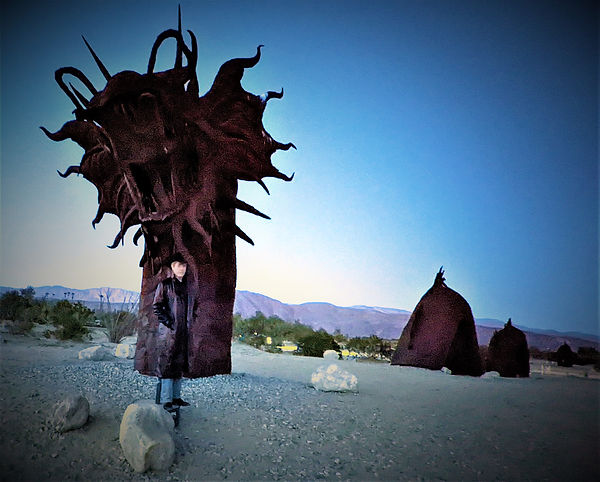
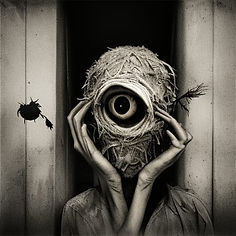
“We Are The Falling Rain” is a example of why you should record EVERY melodic/lyric idea you get while driving. The chorus appeared in 2016 while working on the “Get Off My Lawn” album. It sat in an archive I put together five years ago until I stumbled across it late last year. I was particularly angry that day and the lyric dropped in my lap within maybe 20 minutes. I normally stay away from political viewpoints in my songs. Did I mention how angry I was? The song features the only musician that isn’t me that I have enlisted since my Through the Woods days in the late 1990’s – Dan Hamilton. Brilliant fiddle player in Nashville. Look him up. The song features fiddle, T.Rex-style guitars, pedal steel, bass, drums, tons of stomps/claps, a surly crowd of voices and chime-y guitars. The end section has banjos, timpani, screaming goats and squealing pigs. I hope it intimidates you (just a little).
“Ticking Away” started its life as the opening song from “Mojave”, then as the second song on “Mojave” (after another now-outtake called “We Carry On”) and then was dropped entirely. It was just too large for the claustrophobic vibe I wanted for “Mojave.” Its middle section had not arrived yet. That was a good decision. Sometimes songs arrive before the rest of their party and they have to wait for everyone to show up before they are shown to their table. The lyrics went through slight changes and the chaotic middle section appeared after the latest mass shooting that day. Seriously – America has lost its mind. It features mandolin, Portuguese guitarra, tremolo guitar, bass and a mid section duet of siren and trumpet.

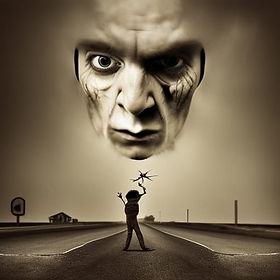
“Where Are You” was the very first song written for the new album, at that time called “Carnivals”, or “Carnie Life.” You can read the progression of the album through time in the link called “The New Project.” Hunter wanted to describe the mind of the hunted. I feel she succeeded. This song features timpani, bass, guitar, electric piano and a very warped merry-go-round calliope.
“Lochinvar” “Lochinvar” is one of those “life-as-it-happens” songs. Musically, it was the third song written for this album, but I had no idea what the lyrics would be. I gave it to Hunter and told her the temporary title was “When Johnny Comes Marching Home," quoting the old Civil War lyric. It sat for months.
And this is Hunter picking up the story.... Yeah, I couldn't figure out what to do with that title. Nothing seemed to work. But then it took a hard left turn after I started emailing back and forth with a long lost cousin. She started giving me some of the deep family history- including the fact that our family had owned a plantation in Mississippi back in antebellum times. Much of that history has been swept under the rug, for obvious reasons, but I was intrigued by a ghost story that was attached to the Lochinvar plantation, and somehow it made itself into that song.
The ghost story goes like this: The son of the house had a personal servant growing up, who was named "Ebenezer" and with whom he shared a close familial relationship. Over time, "Uncle Eb" became his protector and confidant. When the son was called off to fight in the Civil war, he left Uncle Eb in charge as the caretaker of Lochinvar and the family- sworn to protect them until he came home. Ebenezer would walk the house and grounds every night with his lantern, making sure everything was secure.
Uncle Eb died of pneumonia before the master of the house returned from the war, but it's said he continues his duty, as his lantern can be seen bobbing through the house, proving Ebenezer eternally takes care of his charges, and is fulfilling his vow.
It's a story I found both touching and disturbing in equal measure. I'll leave you to discern the ironies and conflicting human emotions in it. The song features dry percussion, bass, tremelo guitar and whispery backing vocals by Stuart and me.
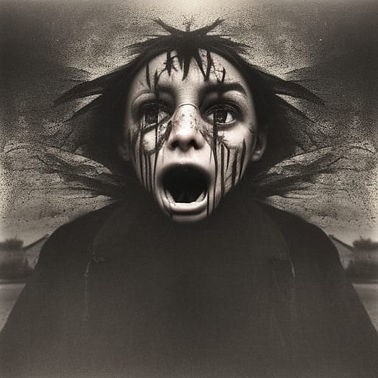
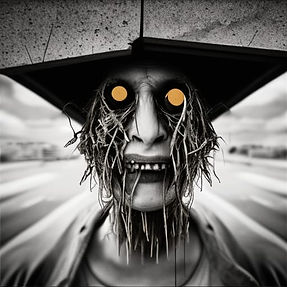
“Cropsey”. Wow. This song took FOREVER to show up. There were four separate attempts at Cropsey over the 18 months it took to complete “American Gothic.” I could not get what I needed. Cropsey is an urban legend from New York from the 1970’s; a homicidal madman who escaped from an insane asylum and hunted children to drag underground and kill. There was some reality to this story; I will let you search for the details. For our song, I could not see the lyrics or arrangement for over a year. Little by little, the story manifested as a crazy man under a bridge yelling at me, telling me things about myself that I didn’t want to hear, with his vagabond friends surrounding him with hollers, a drum, a couple harmonicas and a jaw harp. Do his loud accusations hit home? The reality-challenged sometimes reveal truths we don’t want to look at. The lyrics, when they finally came, were written in 15 minutes. This song is a centerpiece of "American Gothic" and what it wants to say. I hope you don’t feel comfortable with this track – it is meant as an experience we all have when we walk under the wrong bridge.
“The Abandoned Carousel” is a Hunter concoction – I only added the chords and arranged it. Otherwise, this is all her. It took me a while to accept this song on “American Gothic.” I thought it was lyrically somewhat less weighty than other lyrics she has handed me. Then I realized its greater meaning. Think about what parents tell children when horrible things happen. Then think about the fantastical ways those children will change it to discuss with their friends. I will leave that here for you to ponder. This track features Hunter’s little kid voice, electric piano, bass, calliope, piano and an opening merry-go-round playing “Don’t Shave Rebecca” – an old song from my Through the Woods days.
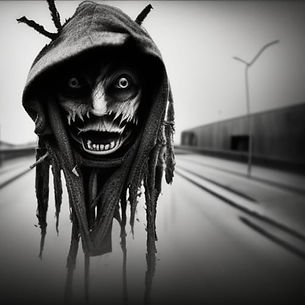
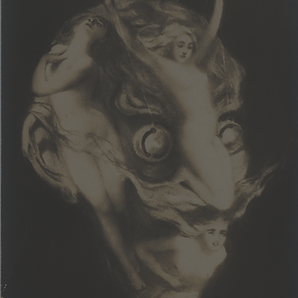
“The Devil Whammy” is a dance song! Good times! Of course, you’re dancing with the Devil. You have no choice. But do you want a choice? I'm hoping this becomes a Halloween perennial, so please play it constantly! This song is a sequel to a song from my old Through the Woods days called “The Red Motel.” In that song, the protagonist is delivered to Hell, where "Disco Inferno" plays non-stop. This song has him recount what brought him to this place and to start the most popular dance step in Hell. "Put your hands in the air, spin your head round and round, shake your hips back and forth, and try not to fall down!" If you sign up for the newsletter, you get "Red Motel" for free. Oh go do it! You WILL dance and wiggle your finger. This song features drums, bass, pedal steel and a hyperactive electric guitar.
“We’ll Meet Again” is a love song… is it? This came from a weekend that brought me four completed songs and recordings. One called “Now We Kiss” is available through the newsletter. "I'm Taking You Down" (written by Hunter) and "When The Truth Comes Out" may come to light over time. "We'll Meet Again" is about as evil as I can get. Lots of tremelo guitar, bass, a really messed up drum loop and one of the oddest guitar solos I’ve ever recorded. Get creeped out. Please.
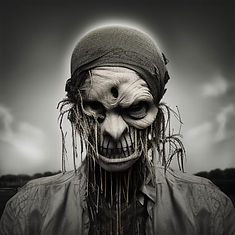
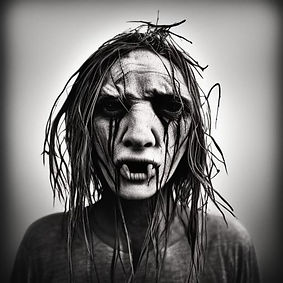
“Runaway Girl” is a head scratcher. It takes place in Purgatory, although the singer doesn’t know it. A man drives up to a mysterious young hitchhiker who asks him odd questions. Why is she so curious about what brought him there? Why is she accusing him of… what is she accusing him of doing, exactly? Why is he giving this weirdo a ride? Why is everything so grey and soggy? I tried to create an atmosphere of being drenched from rain. Lots of garbage can percussion and tremolo guitar, along with pedal steel guitar. No bass, until BASS.
“3 Feet From A Vein”. This was the second song written for the record. It is loosely based on a real person known as Seldom Seen Slim. He was a prospector in the early to mid 1900’s who lived alone his entire life in a completely abandoned town. Once a month he would drive his jeep to stock up on supplies (30 miles away). He said he was “half-coyote, half-wild burro”. Although a true loner, he became so well-known that after his death, the government of Nevada named a mountain pass after him. He devoted his life to finding a silver vein, however this was never found. This song is about the moment he passes from this world to the next. It features tremolo guitar, banjo, a heavenly choir by Hunter, me and computer magic and a combination of wave forms of numerous voices (including mine), pushed, twisted and stretched into the voice of an angel. This stuff takes time. Over the top? It’s certainly “gothic”.
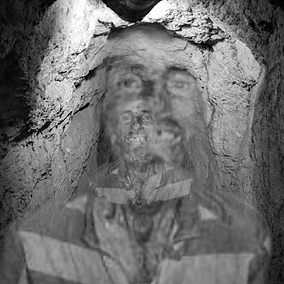
“One Old Coyote” is the very last song written for “American Gothic”. Hunter and I went to Santa Fe, New Mexico for a week, looking for inspiration or clues on how to complete “American Gothic”. Wow – did we get it. In a folk art gallery called “Xanadu”, we were introduced to the yarn art of the Huichol culture of Mexico. They call themselves Wixarika (so shall I). The Wixarika trace their origins back to the Aztecs. When the Spanish conquered Mexico, the hillside Wixarika people were beyond their reach. As a result, they retained their culture for hundreds, if not thousands of years. Their people travelled between Mexico to New Mexico, Texas and Colorado.
The yarn artwork resonates with “American Gothic”; the Wixarika culture is threatened by modern western society. Its children wish to live a modern, convenient lifestyle. Alcoholism is another threat. Peyote is central to their religion and has created problems with the Mexican government. To see an ancient way of life slowly succumbing to newer ideals struck a chord with us. I couldn’t stop talking about the painting the week we spent in Santa Fe. It is gorgeous.

The back of the yarn art painting carries the name of the artist: Hilaria Chavez Carrillo. Armed with her name, we devoted several months of searching to find her, finally reaching out to her daughter through the owner of a gallery called “Peyote People” in Puerto Vallarta, Mexico. Her family lives in the mountains north of Tepic. Hilaria is the widow of Jose Benitez Sanchez; a Shaman who is recognized worldwide as the master of yarn artwork. He taught her his style and she expanded upon it, creating works of vibrant color and motion. If you look at it through modern 3-D glasses (not the red/blue glass type), your eyes will dance. Try it.
“One Old Coyote” is about several things; the fading of old beliefs into something newer, as a parent speaks to the child while the child says goodbye. The loss of identity with a past and the moment that past becomes history. An old coyote in a ravine lies down to receive his sleep. The track features guitar, lap steel, contrabass and cello.